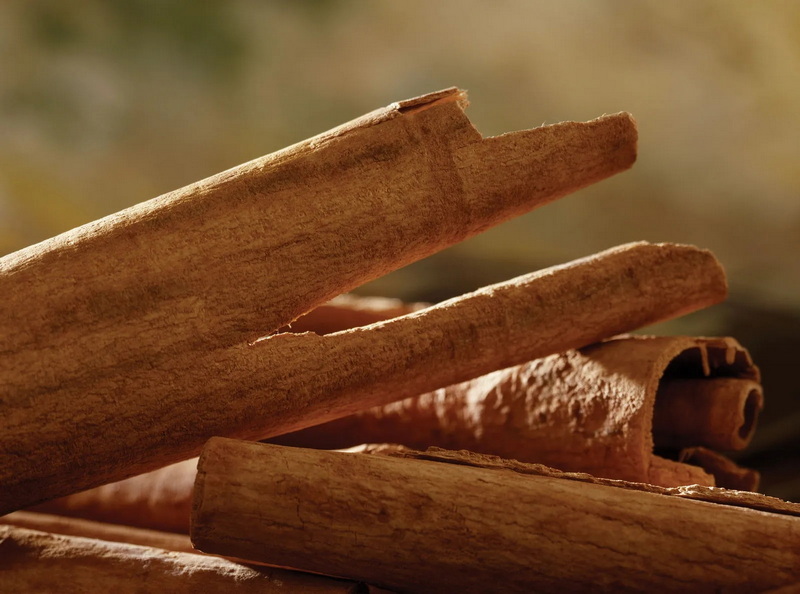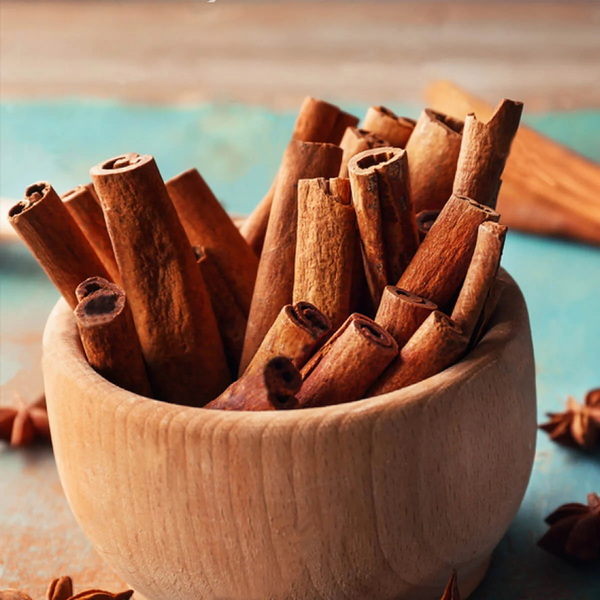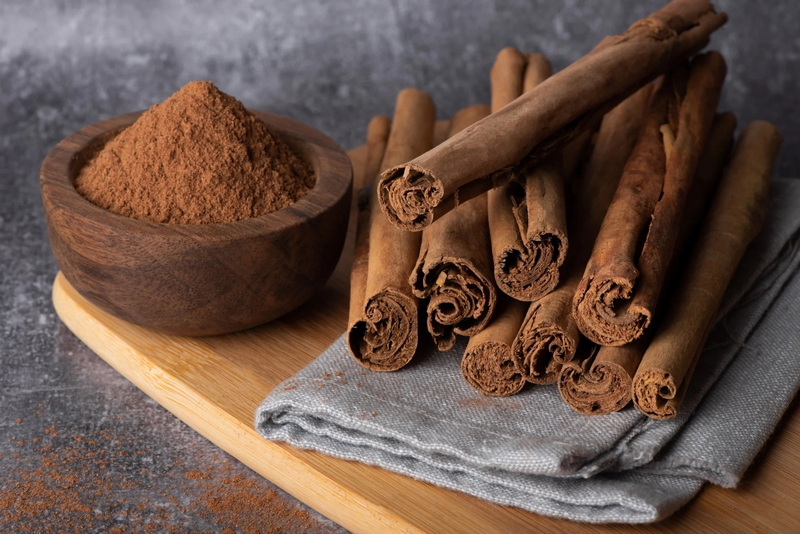Content Menu
● Understanding Cinnamon Bark Extract
>> What is Cinnamon Bark Extract?
>> Uses and Applications
>> Health Benefits
● Key Factors to Consider When Choosing Cinnamon Bark Extract Manufacturers
>> Quality Control Processes
>> Raw Material Sourcing
>> Extraction Methods
>> Testing and Analysis
>> Regulatory Compliance
>> Supplier Reputation and Transparency
>> Sustainability and Environmental Impact
>> Cost and Pricing
● Steps to Evaluate Cinnamon Bark Extract Manufacturers
>> Step 1: Initial Research
>> Step 2: Supplier Shortlisting
>> Step 3: Sample Evaluation
>> Step 4: Chemical Analysis
>> Step 5: Site Visit and Audit
>> Step 6: Review Documentation
>> Step 7: Final Selection
● Visual Inspection
● Sensory Evaluation
● Chemical Analysis
● Microbial and Heavy Metal Testing
● Market Trends and Future Outlook
>> Market Drivers
>> Market Challenges
● Innovations in Extraction Technology
>> Benefits of Supercritical CO2 Extraction
>> Future Developments
● Conclusion
● FAQ
>> 1. What is the primary active compound in cinnamon bark extract?
>> 2. How can adulteration in cinnamon bark extract be detected?
>> 3. What certifications should a Cinnamon Bark Extract Manufacturers have?
>> 4. How does the quality of cinnamon bark extract affect its shelf life?
>> 5. What are the common uses of cinnamon bark extract?
● Citations:
Cinnamon bark extract is a popular ingredient in various industries, including food, pharmaceuticals, and cosmetics. It's derived from the bark of cinnamon trees, mainly Cinnamomum verum (Ceylon cinnamon) and Cinnamomum cassia (Chinese cinnamon). The extract is valued for its bioactive compounds like cinnamaldehyde, known for antimicrobial and antioxidant properties. Selecting the best Cinnamon Bark Extract Manufacturers requires careful evaluation. This article provides a comprehensive guide to help you make an informed decision, ensuring you source high-quality cinnamon bark extract that meets your specific needs.

Understanding Cinnamon Bark Extract
What is Cinnamon Bark Extract?
Cinnamon bark extract is obtained from cinnamon trees. The two primary types are Ceylon cinnamon and Chinese cinnamon. Ceylon cinnamon is known for its delicate flavor and aroma, while Chinese cinnamon is often used in traditional medicine and cooking. The key ingredient, cinnamaldehyde, offers health benefits.
Uses and Applications
Cinnamon bark extract is used across several industries:
- Food and Beverage: As a flavoring agent in baked goods, beverages, and confectionery.
- Dietary Supplements: Due to its potential health benefits, such as managing blood sugar levels and providing antioxidant effects.
- Cosmetics: In skincare products for its antimicrobial and anti-inflammatory properties.
- Pharmaceuticals: As an ingredient in traditional medicine for various health conditions.
Health Benefits
The extract has several potential health benefits:
- Antioxidant Properties: Cinnamaldehyde helps neutralize free radicals in the body.
- Anti-Inflammatory Effects: It can reduce inflammation, benefiting overall health.
- Blood Sugar Management: Cinnamon may improve insulin sensitivity and lower blood sugar levels.
- Antimicrobial Properties: Effective against certain bacteria and fungi.
Key Factors to Consider When Choosing Cinnamon Bark Extract Manufacturers
Quality Control Processes
Cinnamon Bark Extract Manufacturers should have robust quality control measures at every production stage.
- HACCP (Hazard Analysis and Critical Control Points): Ensures potential hazards are identified and controlled.
- ISO Certifications: Look for ISO 9001 for quality management and ISO 22000 for food safety.
- Certificates of Analysis (COA): Detailed documentation of quality control processes for each extract batch.
Raw Material Sourcing
The source of raw materials significantly impacts the final product's quality.
- Reputable Farms/Plantations: Ensure raw materials come from trusted sources.
- Sustainable Practices: Opt for suppliers demonstrating sustainable harvesting and environmental responsibility.
- Geographical Origin: Different cinnamon types (Ceylon vs. Cassia) have varying qualities and properties.
Extraction Methods
The extraction method affects the purity and potency of the extract.
- Solvent Extraction: Traditional method using solvents to extract the desired compounds.
- Supercritical CO2 Extraction: A cleaner, more environmentally friendly method that preserves the extract's integrity.
- Water Extraction: A method that uses hot water to extract the compounds, which is also considered environmentally friendly.
Testing and Analysis
Rigorous testing is essential to verify the quality and safety of the extract.
- HPLC (High-Performance Liquid Chromatography): Identifies and quantifies key compounds like cinnamaldehyde.
- GC/MS (Gas Chromatography-Mass Spectrometry): Analyzes the volatile compounds present in the extract.
- Carbon-14 Testing: Detects adulteration with synthetic ingredients.
- Microbial Testing: Ensures the absence of harmful microorganisms like Salmonella and E. coli.
- Heavy Metal Testing: Checks for heavy metals like lead and mercury.
Regulatory Compliance
Cinnamon Bark Extract Manufacturers must adhere to local and international regulations.
- FDA (U.S. Food and Drug Administration): Compliance with FDA regulations is mandatory for products sold in the United States.
- EFSA (European Food Safety Authority): In the European Union, extracts must comply with EFSA guidelines.
- GMP (Good Manufacturing Practices): Ensures products are consistently produced and controlled according to quality standards.
Supplier Reputation and Transparency
A supplier's reputation and transparency are indicators of reliability.
- Customer Reviews and Feedback: Positive reviews and feedback from existing customers.
- Supply Chain Transparency: Suppliers should provide clear information about their supply chain.
- Audits and Certifications: Look for suppliers who undergo regular audits and hold relevant certifications.
Sustainability and Environmental Impact
Sustainable practices are increasingly important for consumers and businesses.
- Reforestation Programs: Ensures the long-term availability of cinnamon.
- Fair Trade Practices: Supports local communities and ensures fair compensation for farmers.
- Eco-Friendly Extraction: Supercritical CO2 extraction minimizes environmental impact.
Cost and Pricing
While quality should be the priority, cost is also a consideration.
- Competitive Pricing: Compare prices from different suppliers to ensure you get a fair deal.
- Value for Money: Assess the quality and benefits relative to the cost.
- Long-Term Cost Savings: High-quality extracts may offer better efficacy and reduce the need for higher dosages.

Steps to Evaluate Cinnamon Bark Extract Manufacturers
Step 1: Initial Research
- Online Search: Use search engines to identify potential Cinnamon Bark Extract Manufacturers.
- Industry Directories: Explore industry-specific directories for suppliers.
- Trade Shows: Attend trade shows to meet manufacturers and see their products.
Step 2: Supplier Shortlisting
- Create a List: Compile a list of potential suppliers based on initial research.
- Check Credentials: Verify their certifications, quality control processes, and compliance with regulations.
- Request Information: Contact suppliers for detailed information about their products and processes.
Step 3: Sample Evaluation
- Request Samples: Obtain samples from shortlisted suppliers.
- Visual Inspection: Check for uniform color, texture, and absence of visible contaminants.
- Sensory Evaluation: Assess the aroma and taste for the characteristic sweet, warm, and spicy profile.
Step 4: Chemical Analysis
- Lab Testing: Send samples to a certified lab for chemical analysis.
- Verify Composition: Ensure the extract meets the required standards for active ingredient content.
- Check for Adulteration: Use Carbon-14 testing to detect synthetic additives.
Step 5: Site Visit and Audit
- Visit Manufacturing Facilities: If possible, visit the supplier's facilities.
- Assess Processes: Evaluate their quality control, extraction methods, and sustainability practices.
- Conduct an Audit: Perform a thorough audit to ensure compliance with quality standards.
Step 6: Review Documentation
- COA Review: Examine the Certificates of Analysis for each batch of extract.
- Regulatory Compliance: Ensure all necessary documentation is in order.
- Supply Chain Information: Verify the transparency and traceability of the supply chain.
Step 7: Final Selection
- Compare Results: Evaluate all the data collected from the previous steps.
- Consider All Factors: Balance quality, cost, reputation, and sustainability.
- Make an Informed Decision: Choose the supplier that best meets your requirements.
Visual Inspection
Visual inspection is the initial quality check for cinnamon bark extract. High-quality extracts should have a consistent brown color and a fine, powdery texture if in powder form. Avoid extracts with signs of moisture or clumping, which may indicate poor storage or adulteration.
Sensory Evaluation
The aroma and taste are key indicators of quality. High-quality cinnamon bark extract has a warm, spicy, and sweet aroma. Off-odors or a flour-like smell may indicate a lower quality product. Trained sensory panels can help identify deviations from the expected sensory profile.
Chemical Analysis
Chemical analysis is crucial for verifying the extract's composition and purity. Techniques like HPLC and GC/MS are used to quantify key compounds such as cinnamaldehyde. Carbon-14 testing helps detect synthetic adulteration by measuring carbon-14 levels.
Microbial and Heavy Metal Testing
Testing for microbial contaminants and heavy metals ensures the extract is safe. Suppliers must meet international standards for microbial limits and heavy metal residues, including testing for Salmonella, E. coli, lead, and mercury.
Market Trends and Future Outlook
The cinnamon bark extract market is growing due to its increased use in health supplements and functional foods. Trends toward natural and organic products drive this growth. Consumers are becoming more health-conscious, seeking ingredients with proven benefits, which further boosts demand.
Market Drivers
- Health Awareness: Increased awareness of the health benefits of cinnamon bark extract.
- Natural Products Demand: Growing preference for natural ingredients over synthetic ones.
- Regulatory Support: Favorable regulations supporting the use of natural extracts in various industries.
Market Challenges
- Supply Chain Disruptions: Fluctuations in raw material availability due to climate change or geopolitical issues.
- Quality Control: Ensuring consistent quality across different batches and suppliers.
- Competition: The market is competitive, with many suppliers offering similar products.
Innovations in Extraction Technology
Advancements in extraction technology improve the efficiency and sustainability of production. Supercritical CO2 extraction offers a cleaner, more environmentally friendly alternative to traditional solvent methods. This method also helps preserve the delicate compounds found in cinnamon bark, resulting in a higher-quality extract.
Benefits of Supercritical CO2 Extraction
- Environmental Sustainability: Reduces solvent usage and waste.
- Preserves Delicate Compounds: Maintains the integrity of bioactive compounds.
- Cleaner Product: Minimizes the risk of solvent residues in the final product.
Future Developments
Future innovations may include more efficient extraction methods and better analytical techniques to verify extract quality. Additionally, there is a growing interest in using cinnamon bark extract in new applications, such as pharmaceuticals and advanced skincare products.
Conclusion
Choosing the best Cinnamon Bark Extract Manufacturers requires thorough research and evaluation. Focus on quality control, raw material sourcing, extraction methods, testing, regulatory compliance, and supplier reputation. By following the steps outlined in this guide, you can confidently source high-quality cinnamon bark extract that meets your needs and standards.

FAQ
1. What is the primary active compound in cinnamon bark extract?
The primary active compound is cinnamaldehyde, known for its antimicrobial and antioxidant properties.
2. How can adulteration in cinnamon bark extract be detected?
Adulteration can be detected using carbon-14 testing, which verifies if the extract is derived from natural biomass sources.
3. What certifications should a Cinnamon Bark Extract Manufacturers have?
A supplier should have certifications like ISO 9001 for quality management and ISO 22000 for food safety.
4. How does the quality of cinnamon bark extract affect its shelf life?
High-quality extracts, properly stored, tend to have a longer shelf life due to the absence of contaminants and proper processing.
5. What are the common uses of cinnamon bark extract?
Common uses include flavoring in food and beverages, dietary supplements, cosmetics, and traditional medicine.
Citations:
[1] https://www.made-in-china.com/manufacturers/cinnamon-bark-extract-polyphenols-20%25.html
[2] https://www.botaniex.com/how-to-verify-the-quality-of-cinnamon-bark-extract-from-suppliers.html
[3] https://www.sohu.com/a/846632226_121124322
[4] https://manekancor.com/supercritical-co2-extracts/cinnamon-extract
[5] https://k-agriculture.com/cinnamon-quality-standards/
[6] https://pmc.ncbi.nlm.nih.gov/articles/PMC10494279/
[7] https://dir.indiamart.com/impcat/cinnamon-extract.html
[8] https://fssai.gov.in/upload/uploadfiles/files/Guidance_Note_Cinnamon_CCASIA_10_03_2014(1).pdf






























